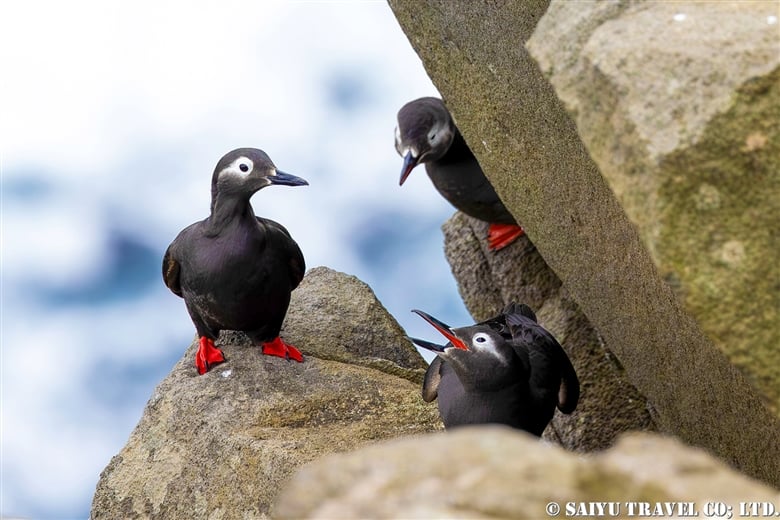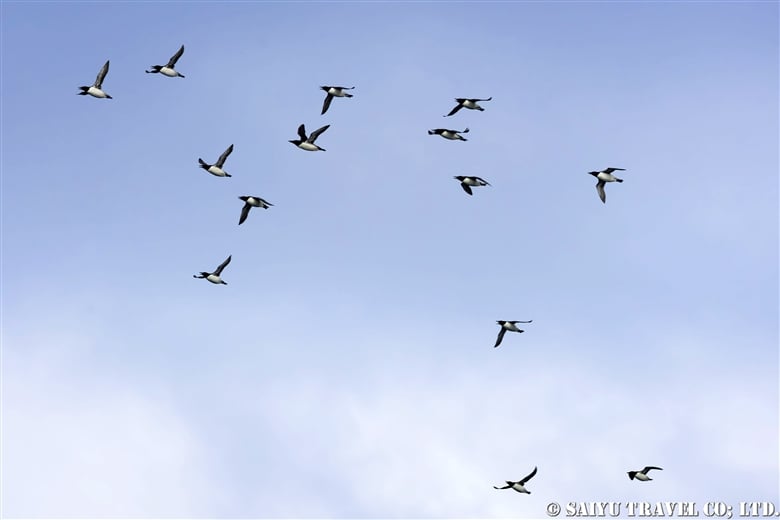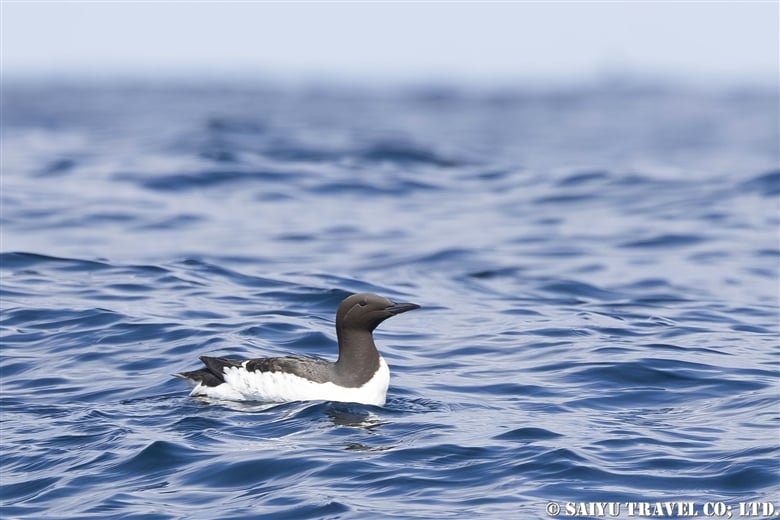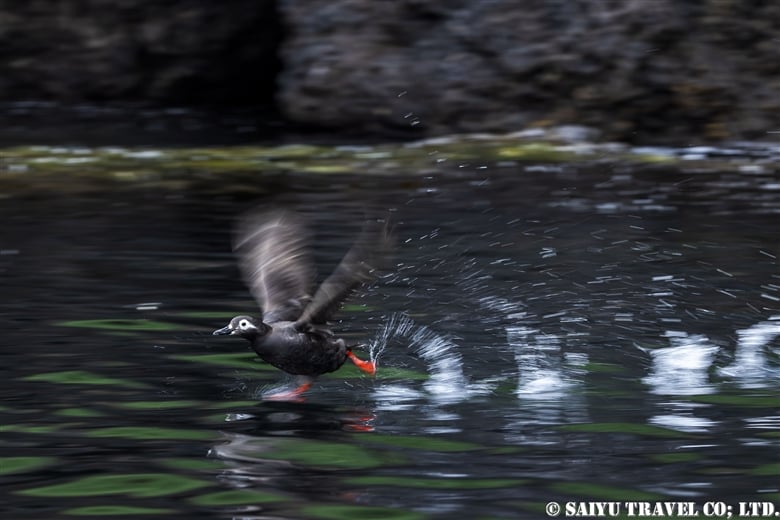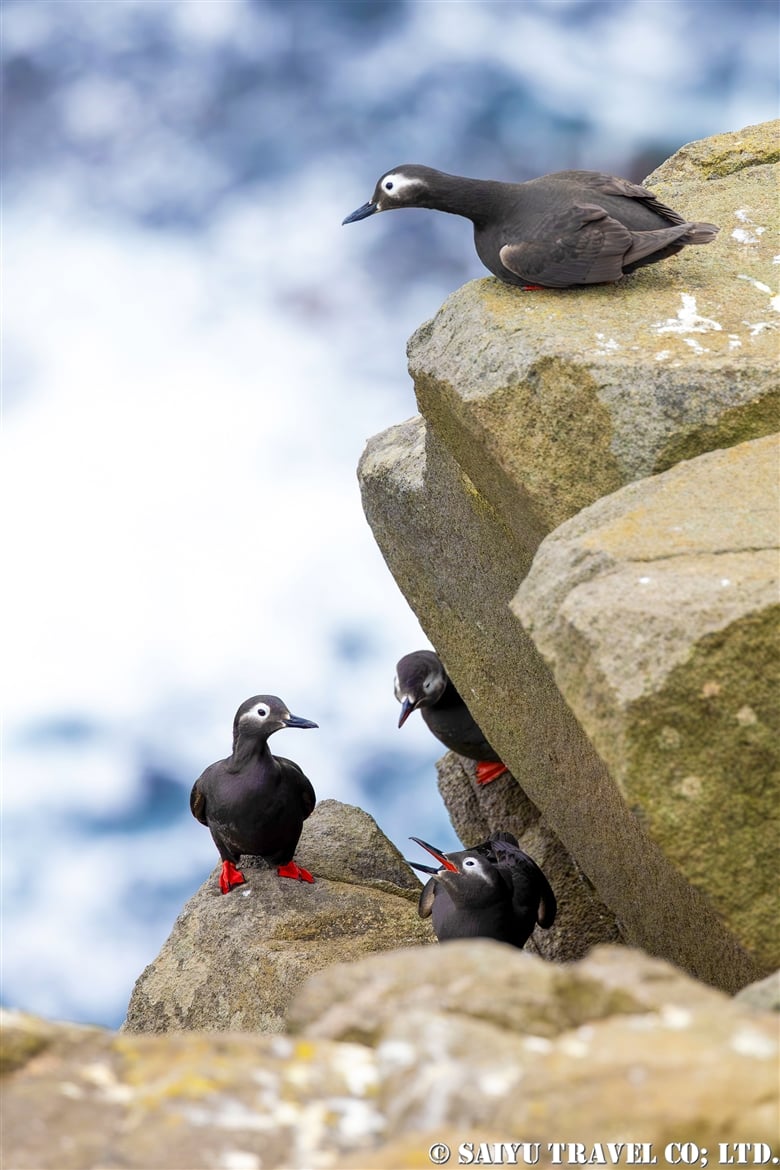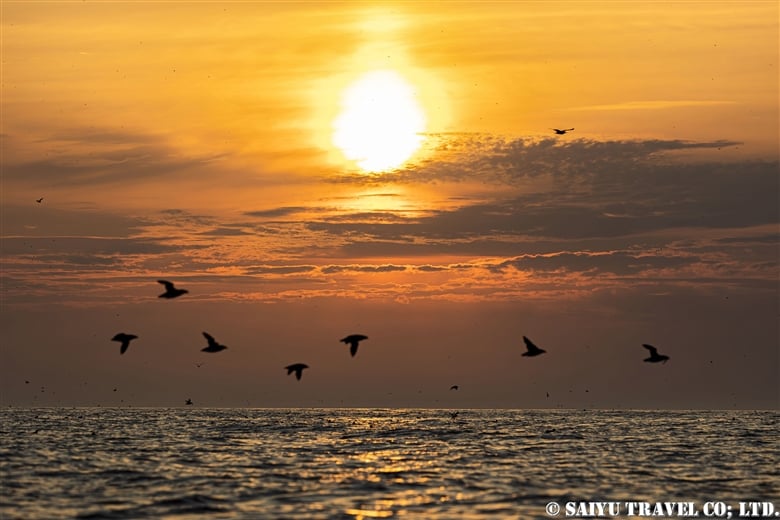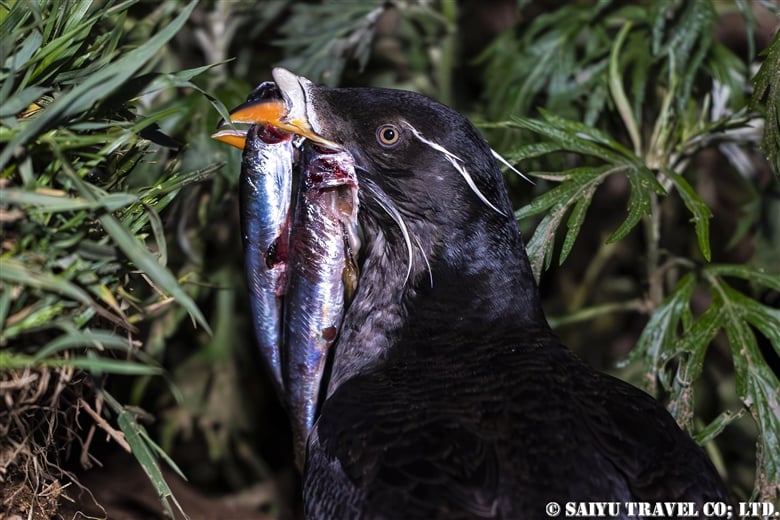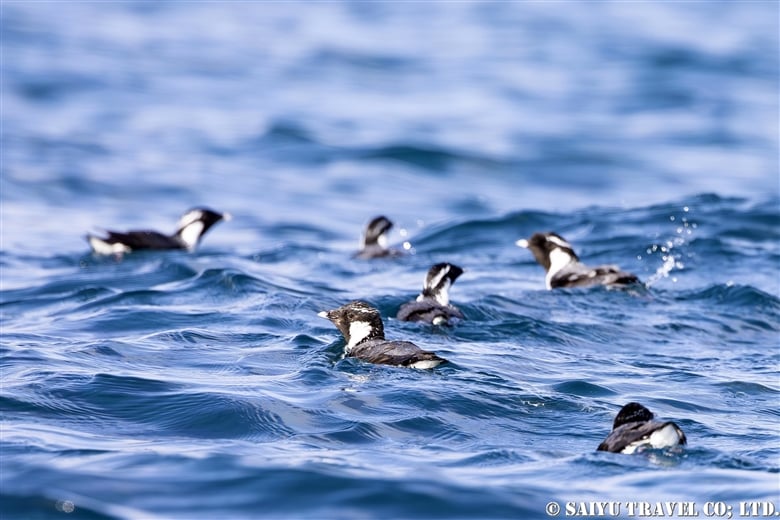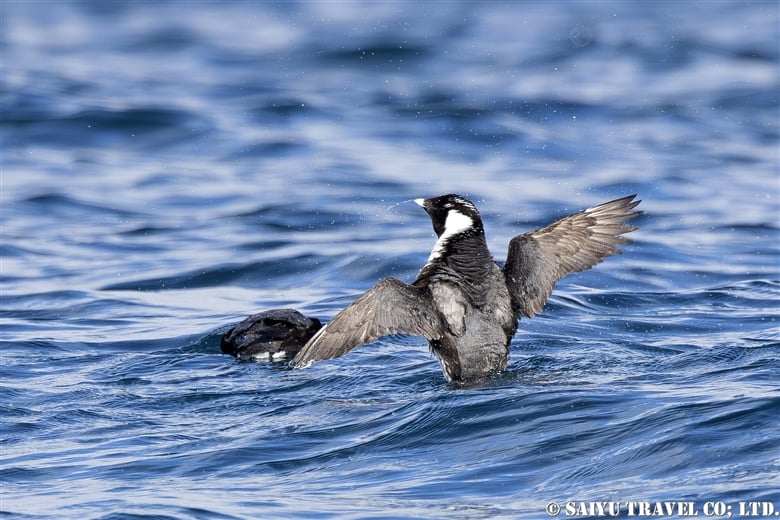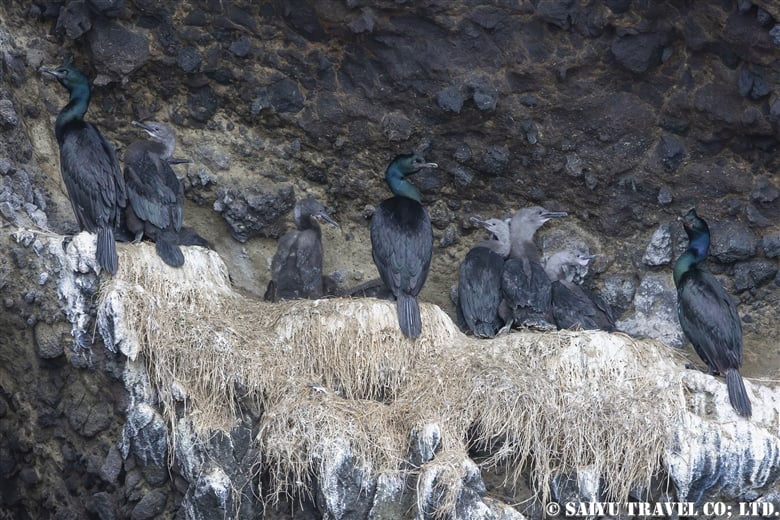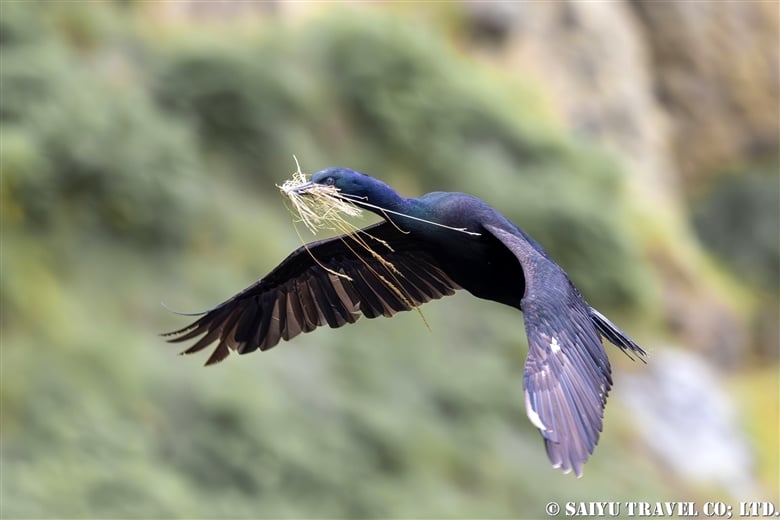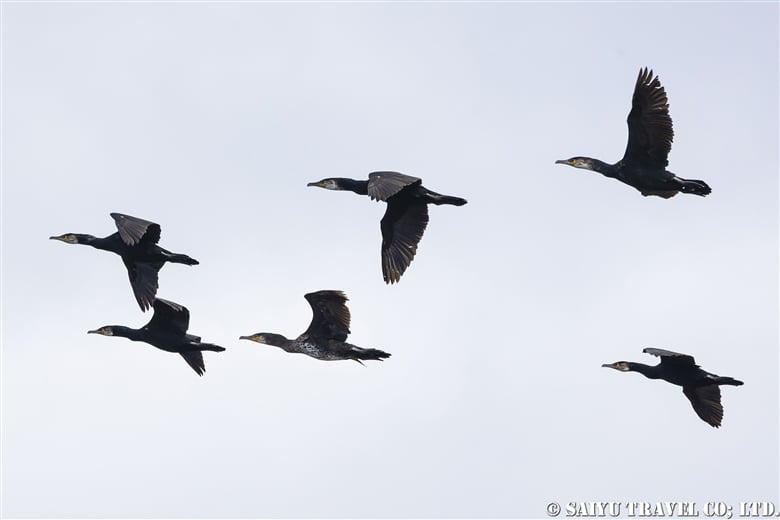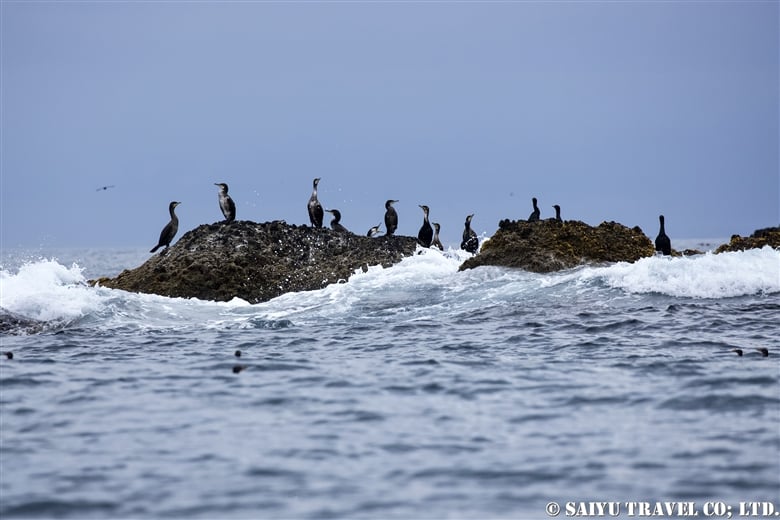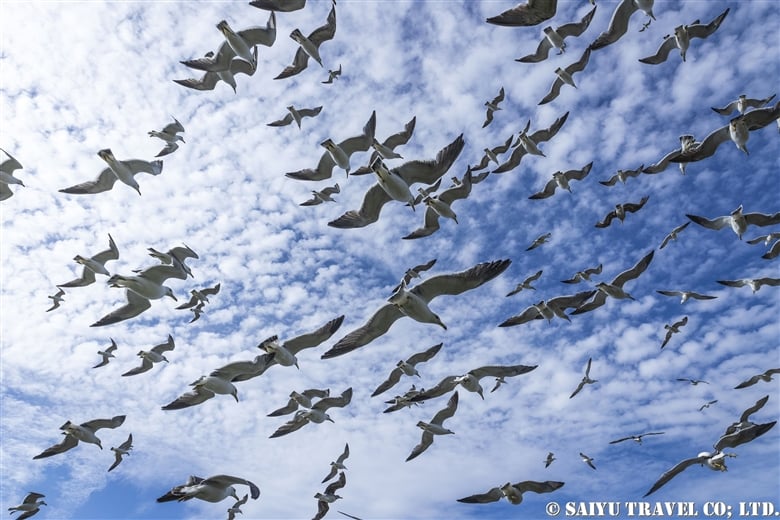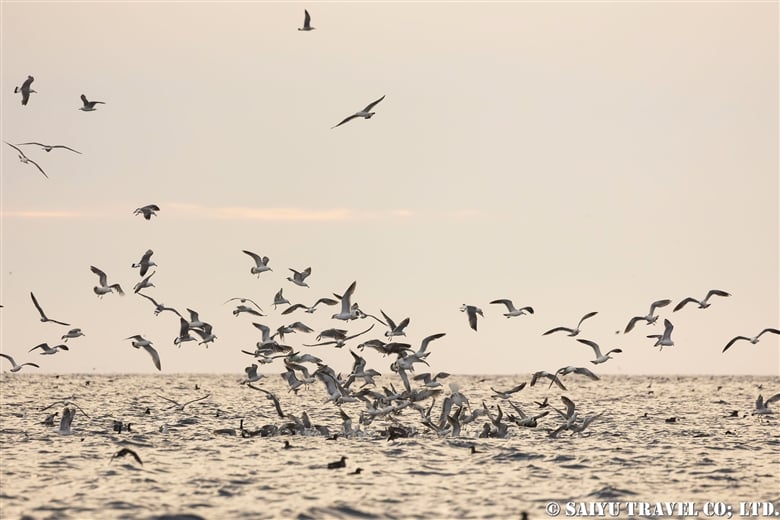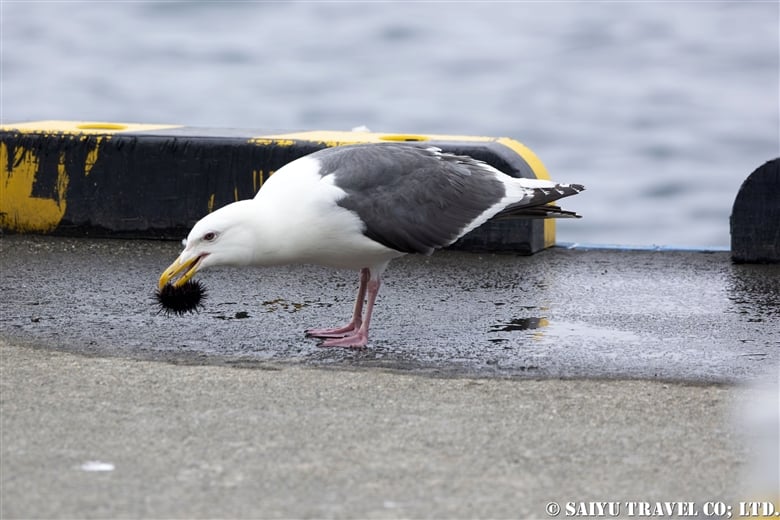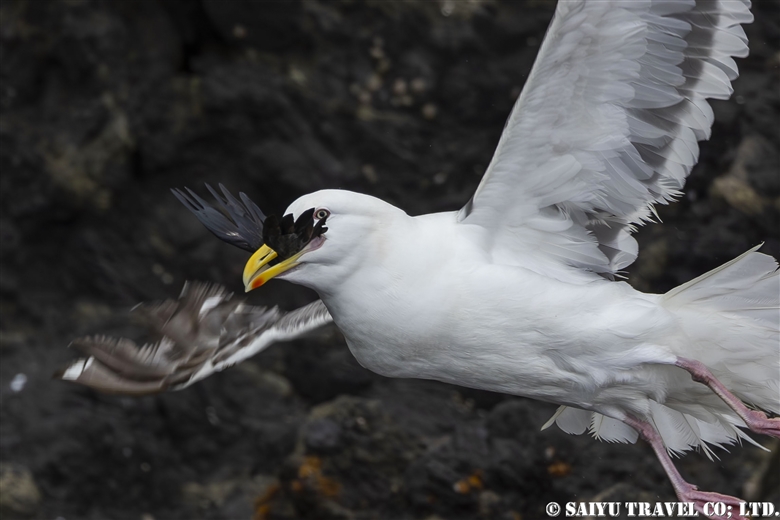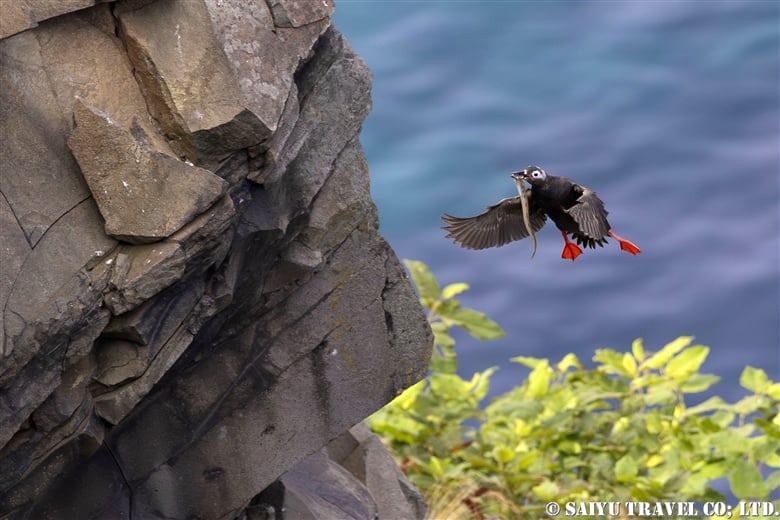
We have summarized the features of three species of birds in the Auk family that are popular amongst birders visiting Teuri Island: Spectacled Guillemot, Common Guillemot and Rhinoceros Auklet!
(1) Carrying caught fish with their beaks.
The main part of the observation is watching birds bringing fish into their beaks to feed their chicks. This is a common feature of the Auk family, as they are able to swallow fish while swimming in the water and cannot spit out the fish once swallowed to feed the chicks. Hence they fly with several fish in their beak to bring the catch back to the nest.
On Teuri Island, night tours are held every evening during the season (from end of April to the end of July) to observe the 800,000 Rhinoceros Auklets returning to their nests in the evening.
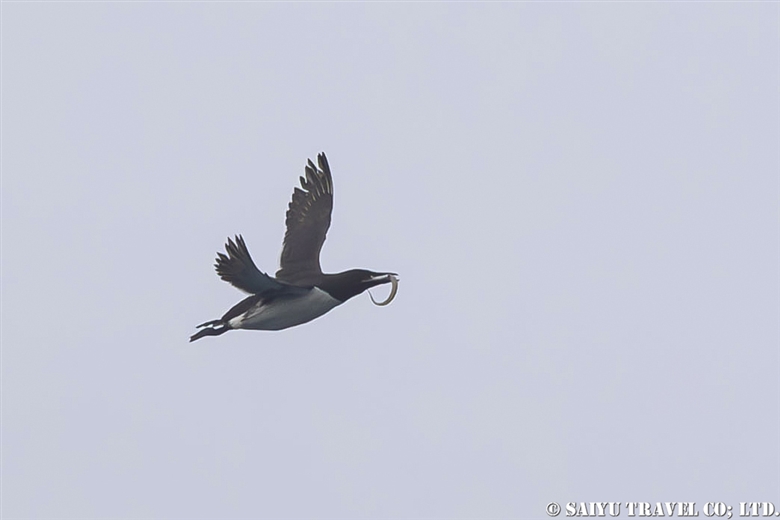
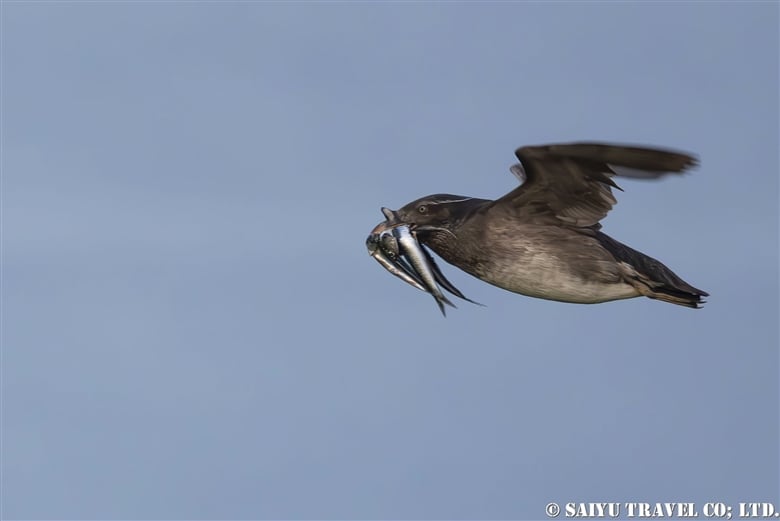
Unlike many other species, Rhinoceros Auklet feed their chicks only once a day, when they finally return home in the evening. Therefore, there are several fish for them to bring into their beaks!
(2) Their wings are short and they need to run on the surface of the sea to fly away
When diving in the sea, the Auk family swim by flapping their wings underwater. For this reason, their wings are shorter and smaller than those of other birds of the same size, so that they do not create resistance in the water.
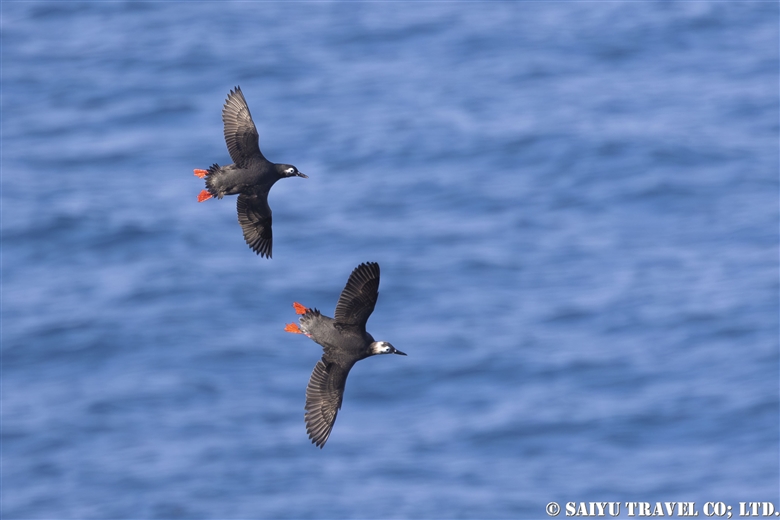
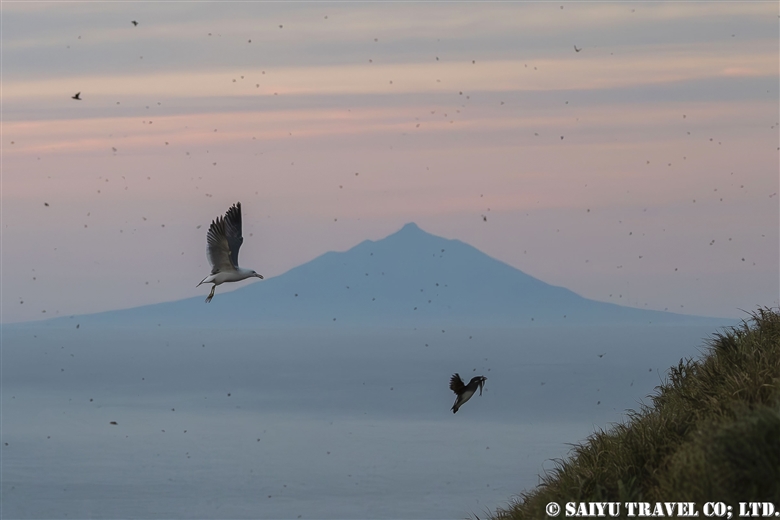
The size of a Rhinoceros Auklet’s wings clearly differs when compared to the size of a Black-tailed gull’s wings.
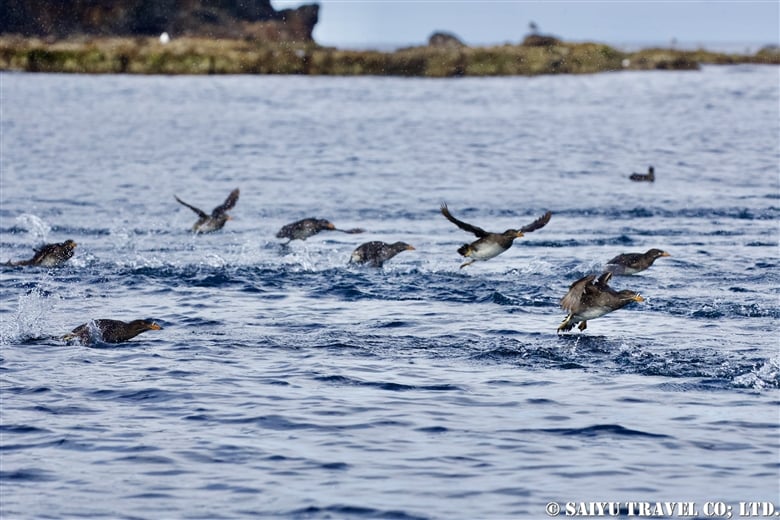
Due to smaller wings, the Auk family birds do not have high flight capabilities and flap their wings more frequently in the air than bird species of the same size. They also need to run on the surface of the sea to gain momentum in order to take off from the sea into air.
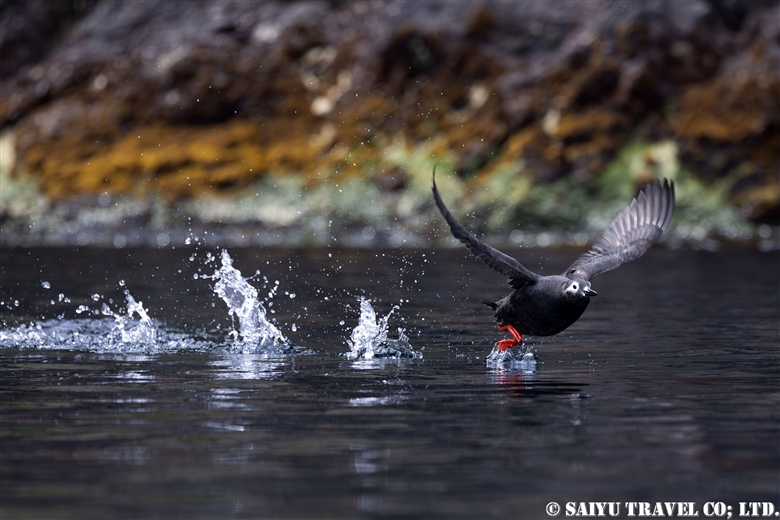
Among the most beautiful is the red-footed Spectacled Guillemot, which runs along the surface of the sea. You can only see this view up close from aboard a small seabird-viewing boat. Please come and see this beautiful moment when you visit Teuri Island!
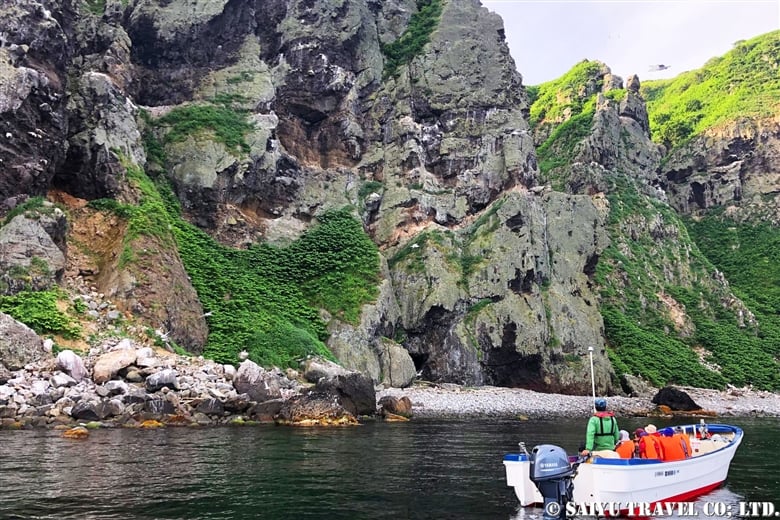
Close-up seabird photography from the observation boat.
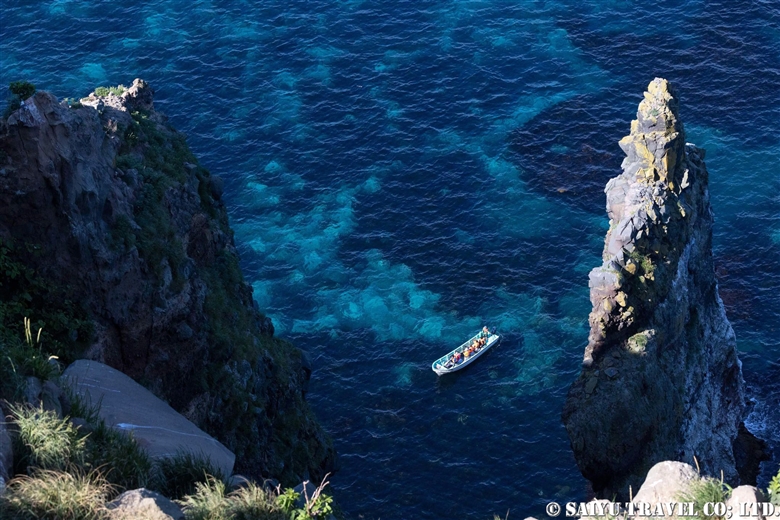
A sea birds observation boat in the ‘Teuri blue’ sea.
Photo & text : Wataru HIMENO
Observation : May-Jul 2023, Teuri Islaand, Hokkaido
★ Visit our web site of TEURI ISLAND.
★Contact us to make arrangements for photographing seabirds on Teuri Island and Wildlife of Japan.
★Wildlife videos are also available on Youtube – we have the playlist as well.
Tags: Keimafuri, Keimafuri gou, Wildlife of Japan, Bird photography in Japan, Birds of Hokkaido, Common Guillemot, Birds of Japan, Wildlife of, Teuri Island, Birds photography, Rhinoceros Auklet, Sea birds, Spectacled Guillemot




